You stare at your updated password dashboard for the best AI tools. The 3rd one you’d purchased in 2025 —watching it generate another report that somehow makes your job harder, not easier. After spending god knows how much on “game-changing” AI solutions, your team is still drowning in more data, more complexity, and more frustration than ever before.
You are not alone; across industries, leaders are discovering that the AI revolution they were promised feels more like an expensive detour into confusion.
If you’re that business leader, department head, or entrepreneur, this is your reality check. These are 7 best AI tools you can’t afford to ignore in 2025.
List of the AI Tool’s True Goal
Let me first tell you which categories made it to the list. Our true purpose examines tools that are not disappointments, as there are tools that want to solve actual problems. We are going to find them. Hence, we have split the 7 AI tools into;
- Five tools on the list completely automate one part of the work.
- One tool for research to push your ideas backed by strong support.
- One tool helps you save costs on multiple subscriptions.
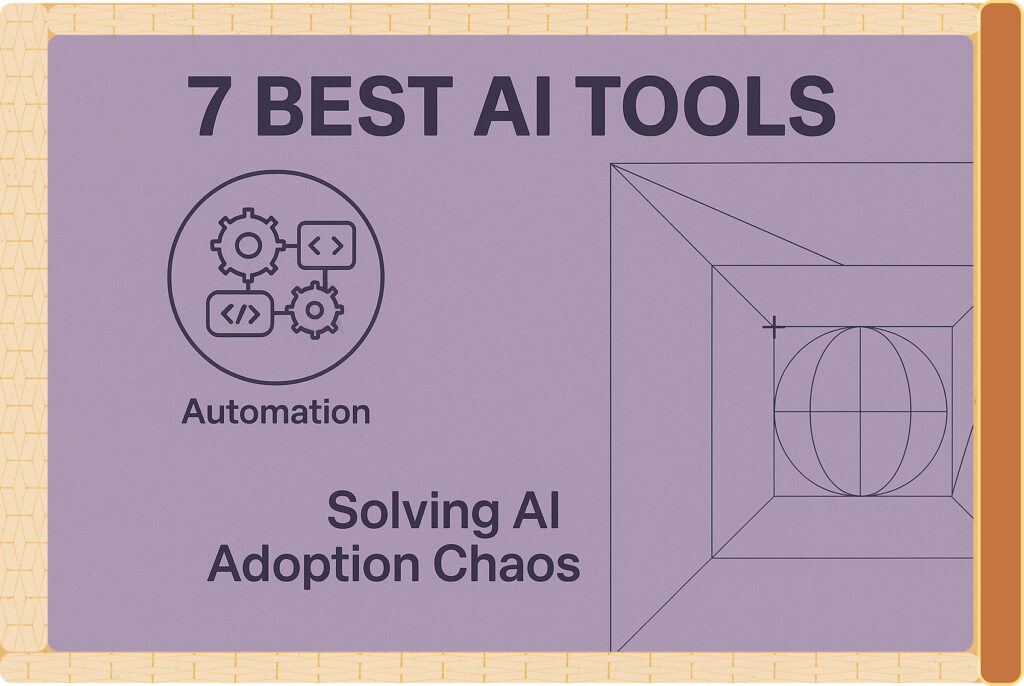
If you are an agency, these are the categories of tools you can invest in. They are like a “must-have”. Understanding the differences and similarities will save you from the next shiny object that promises everything and delivers frustration.
Here’s how the Best AI tools can assist you:
- Saves Time: Repetitive tasks? The best AI tools can handle them while you focus on important stuff.
- Data Analysis: They can process large amounts of data and provide you with meaningful information.
- Work Efficiency: With AI, you can work smarter and faster, achieving more in less time.
1. Weam AI
Weam AI is one of the best AI tools for business leaders who are looking to adopt AI but face three major bottlenecks; Don’t know where to begin, are tired of multiple subscriptions with sharedWho benefits the most from Jules? accounts, and need to maintain full data control.
Consisting of powerful Gen AI models from ChatGPT and Claude to Grok and Qwen the platform also offers an agent builder with the help of these models. They have their own curated prompt library, and every feature is available for either personal use through ‘private brain’ or making your ideas a shareable feed in ‘shared brains’.
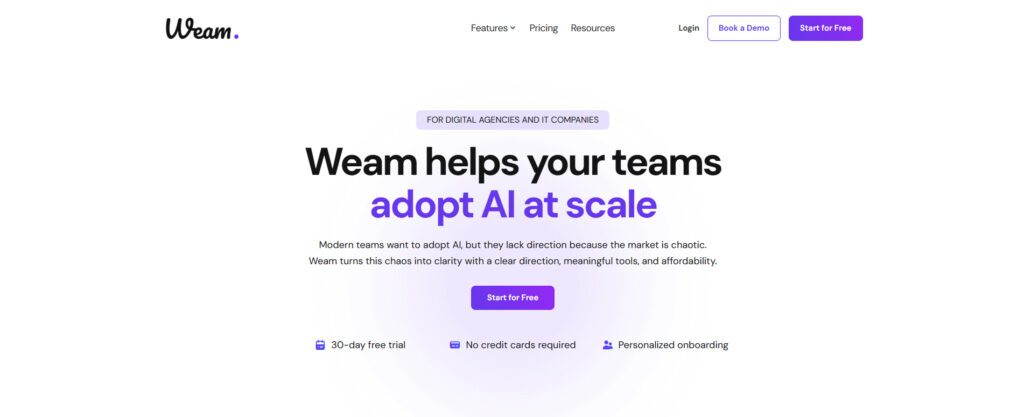
What does Weam AI do?
Weam AI is a platform that lets you deploy, create and customize AI solutions to address unique industry challenges while maintaining complete data control.
The platform says: “Turn enterprise AI into industry-specific AI solutions without vendor lock-in“
Why It’s revolutionary in 2025?
While companies rush to adopt Best AI tools, they’re unknowingly creating operational chaos that undermines the very productivity gains they’re seeking. Weam AI solves the problem no one is daring to talk about.
- Security & Access Chaos – Shared accounts create vulnerability nightmares while usage conflicts paralyze team productivity.
- Invisible Adoption Failures – Zero visibility into actual usage patterns leads to poor adoption rates and wasted training investments.
- Scaling Cost Traps – Organizations face impossible choices between risky account sharing or prohibitively expensive per-user licensing that kills growth potential.
Who benefits the most from Weam AI?
Weam AI is for businesses that understand and want to advance in the right direction using AI at its core. It’s for founders, C-level executives, IT agencies, and Industry experts who need their team to begin with clear goals and understand AI’s strengths and limitations.
Limitations
They have an option for providing Weam as a self-hosted option, and they are providing support too at a shockingly low cost of 50% off the original price. However, the offer expires soon. After 50 early partners, they return to regular pricing on July 1st.
2. Jules
You assign a complex bug fix at 5 PM, grab dinner with your family, and wake up to a perfectly executed pull request with detailed explanations and passing tests. This isn’t a developer’s fever dream—it’s Jules, Google’s agentic AI tool for coding. Unlike the endless parade of “AI copilots” that offer suggestions you still have to implement, Jules actually rolls up its sleeves and codes.
Built on Gemini 2.5 Pro, Jules doesn’t just understand code snippets—it comprehends entire codebases, writes comprehensive tests, fixes bugs across multiple files, and even generates audio changelogs explaining what it accomplished.
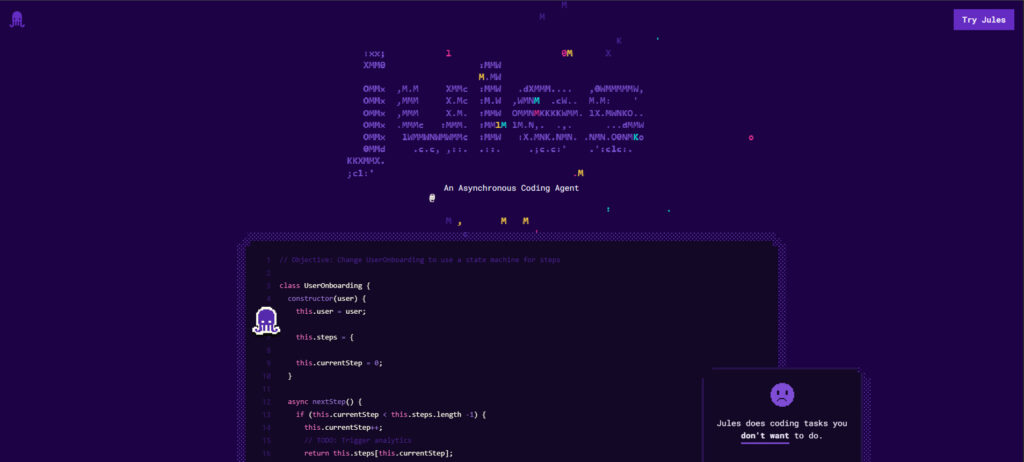
The game-changer? It works asynchronously in secure Google Cloud VMs, meaning you can delegate tasks and focus on architecture, strategy, or that coffee you’ve been meaning to finish since Tuesday.
What does Jules do?
- Full codebase comprehension – Understands your entire project context, not isolated files.
- Autonomous execution – Writes tests, fixes bugs, builds features, updates dependencies independently
What makes it revolutionary for the 2025 list?
- Asynchronous workflow – the AI tool for coding works in background while you handle strategic tasks.
- GitHub integration – Creates pull requests with detailed documentation.
- Audio summaries – Converts complex changes into digestible audio explanations.
Who benefits from Jules?
Your team is struggling with code maintenance, and managers who need reliable task delegation without micromanagement.
Limitations
The Best AI tools for coding require clear instructions and human oversight—it’s not replacing engineering teams, but supercharging them. Currently in public beta with usage limits, it demands a learning curve to communicate effectively with an AI agent that actually delivers on its promises.
3. TXYZ
While most Best AI tools for research offer basic search and summarization, TXYZ operates like your seasoned research assistant. it analyzes millions of academic documents, synthesizes complex information, and automates the tedious parts of research that consume hours of your day.
Built for the modern research ecosystem, TXYZ combines powerful AI with a thriving community of 500,000+ researchers worldwide. It handles everything from literature reviews and citation management to cross-disciplinary discovery. The result? Research workflows that move at the speed of insight, not the pace of manual paper-hunting.

What does TXYZ do?
- Intelligent document analysis – Upload and analyze up to 100 pages with AI-powered summarization.
- Literature discovery – Find relevant papers across millions of academic documents.
- API integration – Build TXYZ’s capabilities into existing research pipelines.
What makes it unique for the 2025 list?
Unlike generic Best AI tools for research, TXYZ’s agentic workflows minimize hallucinations through document-linked answers and cross-disciplinary reach that spans all academic fields.
Who benefits from Make?
Your marketing and business teams, who have a never-ending hunger for information, the right information.
Limitation
Advanced features require a learning curve, content scope depends on indexed materials, and usage limits apply to most plans. TXYZ accelerates research but shouldn’t replace critical human judgment in academic or policy work.
4. Make
Speaking of marketing and business teams who have the largest pile of repetitive tasks, we’ve got an AI tool for marketing. These teams understand very well that eliminating mundane tasks is not the end you need to keep replacing them with an advanced process.
While most automation tools simply move data from Point A to Point B, Make has evolved into something that executes tasks just the way you like it. Teams can visualize complex automation logic, collaborate on workflows, and deploy enterprise-grade solutions without writing a single line of code. The result? Businesses that operate more like intelligent organisms than rigid machines.
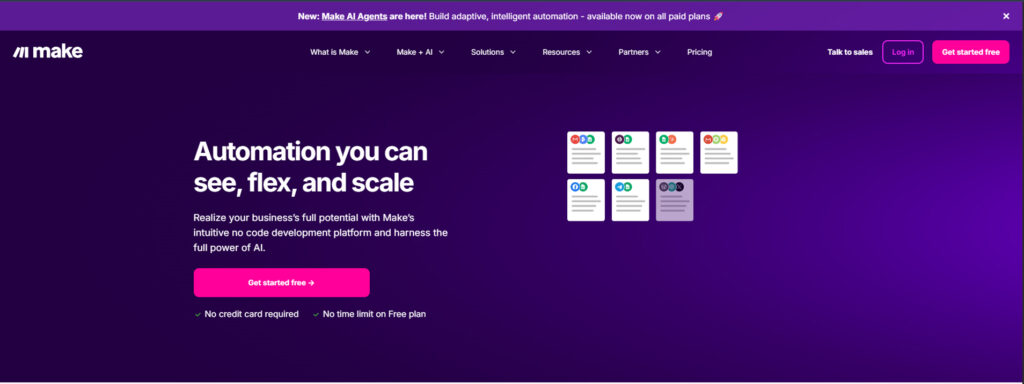
What does Make do?
- Connect apps and automate processes with an intuitive drag-and-drop interface.
- Deploy intelligent agents that make autonomous decisions within workflows.
- Transform and move data between systems instantly and reliably.
- Teams can share, document, and scale automation logic transparently.
What makes it unique for the 2025 list?
Make’s AI Agents bring adaptive intelligence to automation at scale, letting workflows evolve with changing business needs rather than breaking when conditions shift. This is especially crucial for AI for marketing operations where customer preferences, market dynamics, and campaign performance require constant optimization and real-time adjustments.
Who benefits from Make?
Non-technical professionals automating repetitive tasks, IT teams orchestrating complex integrations, and marketing departments leveraging best AI tool for marketing automation that deliver hyper-personalized customer experiences.
Limitations
The automation workflow is called ‘scenarios’. Advanced scenarios require mastery time, usage limits apply to lower-tier plans, and very complex automations need careful planning.
5. Hyper Write
HyperWrite is one of the best AI tools for writing that actually understands your voice, context, and goals. This isn’t another generic content generator spitting out robotic text. HyperWrite’s AutoWrite creates everything from marketing copy to academic articles. Add real-time research capabilities, custom AI tool creation, and a browser extension that works everywhere, and you’ve got a writing companion that adapts to how you actually work.
What makes HyperWrite stand out is its personalization engine that learns your style and the seamless integration of live web research with scholarly sources. Whether you’re crafting emails, summarizing meetings, or building custom workflows, everything happens within one intuitive platform that follows you across the web through its Chrome extension.
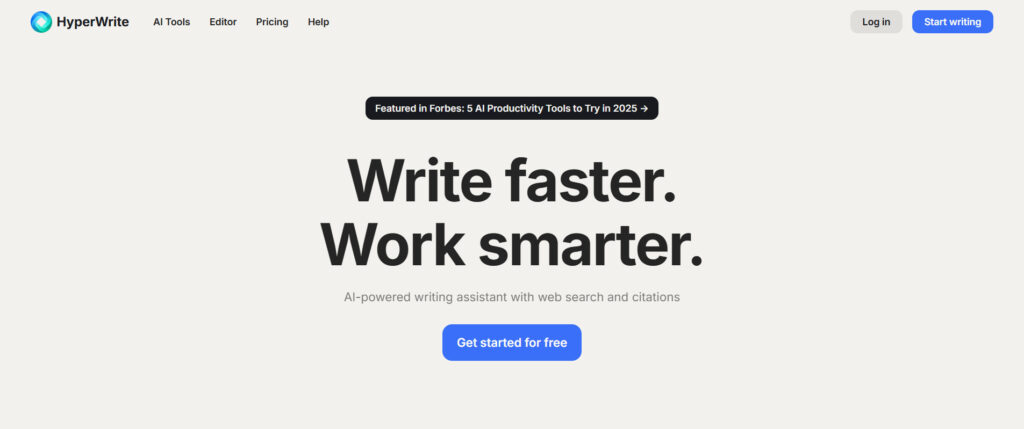
What does Hyper Write do?
- Intelligent content generation: AutoWrite creates articles, stories, and marketing content from simple prompts.
- Research integration: Real-time access to current information and academic sources with citations.
- Universal access: Browser extension brings AI assistance to any website or document.
What makes it unique for the 2025 list?
Its real-time web integration ensures content stays current, and custom tool capabilities let users extend functionality beyond standard templates.
Who benefits from Hyper Write
Content creators generating high-quality material quickly, students conducting research and academic writing, professionals managing communication tasks, and solopreneurs needing scalable writing support without enterprise costs.
Limitations
One of the best AI tool for writing yet lacks multimodal capabilities like image or code creation. Advanced features can be buried in the interface, output quality varies for highly technical content, and the credit-based pricing system limits heavy usage.
6. Windsurf
Most code editors offer autocomplete and syntax highlighting, but Windsurf operates like having a senior developer working alongside you 24/7. The platform is an agentic coding environment that understands your entire project, plans multi-step solutions, and iterates until tasks are complete.
This one of the best AI tool for coding. Windsurf plans, executes, debugs, and refines autonomously. Combined with deep codebase awareness, real-time web search integration, and support for multiple AI models (Claude 3.5, Gemini 2.0 Flash, Deepseek R1), it transforms how developers approach both routine maintenance and ambitious new features.

What does Windsurf do?
- Plans and executes complex coding tasks with iterative refinement until completion.
- Understands entire codebases through local indexing and persistent memory systems.
- Cascade flows provide safe, controllable AI automation with approval gates.
What makes it unique for the 2025 list?
Its agentic approach handles everything from debugging to large-scale refactoring, while interactive workflows ensure developers maintain control over critical decisions and code quality standards.
Who benefits from Windsurf?
Professional developers automating routine tasks, enterprise teams standardizing code quality across projects, and newcomers.
Limitations
Advanced features like custom rules and Cascade flows require experimentation to master, deep indexing demands modern hardware resources, and human oversight remains essential for production code.
While Windsurf offers competitive pricing, some premium features may require paid tiers, and like the majority of the best AI tools for coding, security considerations apply when working with proprietary or sensitive codebases.
7. n8n
The visual workflow builder connects over 500 apps and services through an intuitive drag-and-drop interface, but the real power lies in its unlimited automation potential. Create simple email sequences or complex multi-step processes involving databases, APIs, and custom logic—all without vendor restrictions or escalating costs.
What makes n8n particularly compelling is its native AI integration that seamlessly blends with traditional automation, making it an excellent choice among the best AI tools for business advancement. With pre-built templates, custom JavaScript/Python support, and self-hosting capabilities, n8n delivers enterprise-grade automation while maintaining complete data privacy and control over your infrastructure.
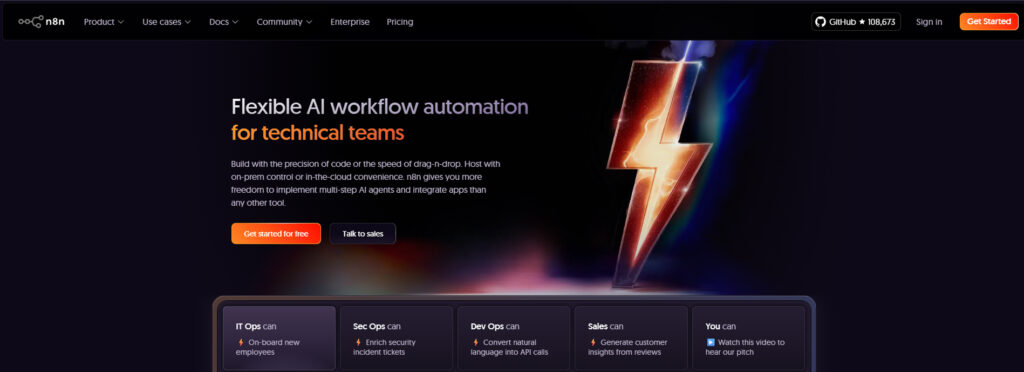
What does n8n do?
Unlike closed systems, it integrates seamlessly with the best AI tools for business automation, data processing, and intelligent workflow orchestration, making it cost-effective for organizations requiring both scale and customization.
What makes it unique for the 2025 list?
n8n’s open-source model eliminates the per-task fees that plague other platforms, while its community-driven development ensures continuous innovation.
Who should benefit from n8n?
- Tech-savvy teams needing advanced customization
- Privacy-conscious businesses requiring self-hosted solutions
- DevOps teams are automating deployment pipelines,
- Startups are seeking scalable automation without vendor lock-in or escalating subscription costs.
Limitations
While community support is robust, enterprise users may need premium support, and integrating specialized Best AI tools for business workflows might require custom development for optimal performance.
Wrapping Up!
The difference between companies succeeding and struggling often comes down to how quickly they can identify, implement, and scale with the right and best AI tool. For you, the right AI tool needs to do everything that your client requests. It should solve your bottlenecks, which disrupt management, workflow, decision making, and break your bank.
The window for competitive advantage through early AI adoption is rapidly closing, making 2025 the critical year for transformation. Every day you delay implementing these AI solutions, your competitors are gaining ground while you’re losing money, time, and opportunities. Why don’t you start with Weam AI? A self-hosted open source with the right support for guidance too..
Frequently Asked Questions
Which are the best AI tools of 2025 for your business?
Here is the list of the best AI tools of 2025 for your business:
- Weam AI
- Jules
- TXYZ
- Make
- Hyperwrite
- Windsurf
- n8n
How can AI tools improve productivity and efficiency in daily workflows?
AI tools revolutionize workflows by automating mundane tasks, optimizing complex processes, and delivering data-driven insights—empowering teams to focus on innovation and high-value decision-making.
What are the main ethical concerns when using AI-powered solutions?
Critical challenges encompass algorithmic bias, opaque decision-making, accountability gaps, and risks of misuse or disinformation propagation.
How do I evaluate the reliability and accuracy of an AI tool’s outputs?
Prioritize platforms with transparent algorithms, built-in feedback mechanisms, and explainable outputs backed by audit trails.
How can organizations ensure the responsible and ethical use of AI?
Organization needs to follow ethical guidelines and regulations passed by government or ethical bodies. On the practical side they can also deploy safe AI use on their own infrastructure to minimize data leak, sharing, and infiltrations.

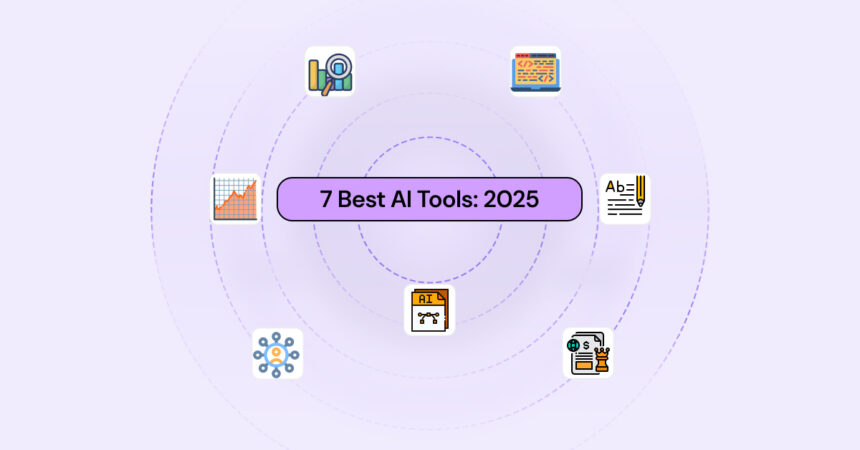

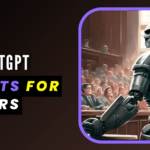
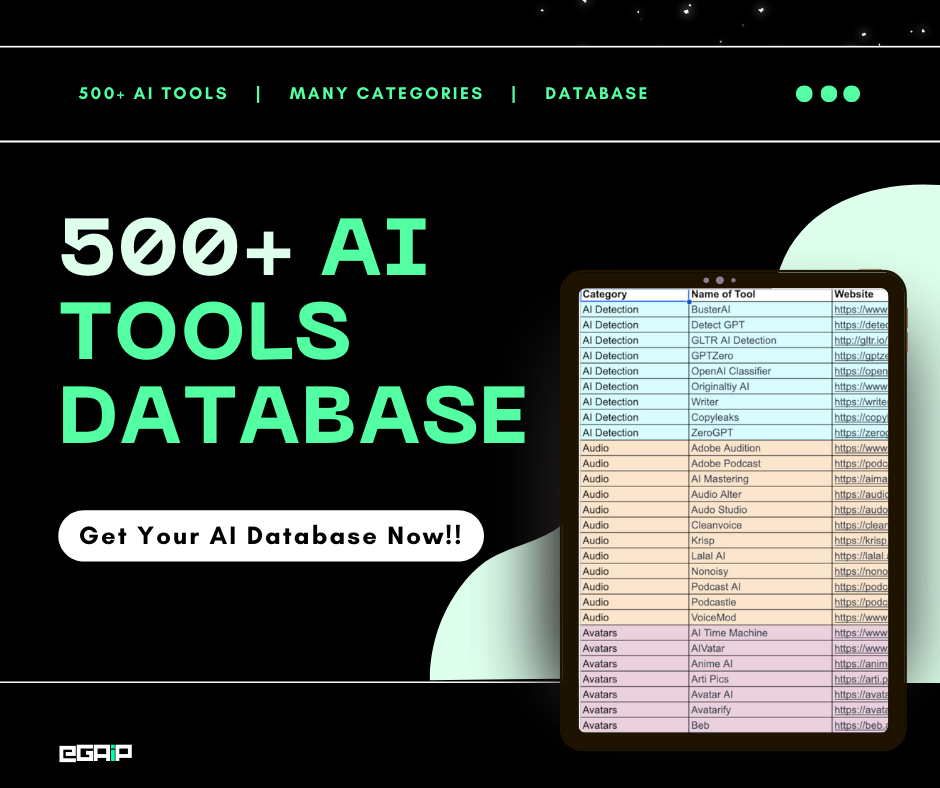
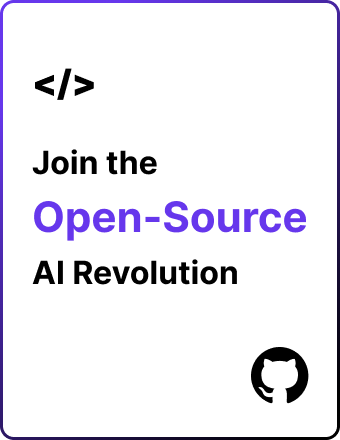
The tools listed are interesting, but I think the real challenge in adopting these AI solutions will be balancing their potential with the learning curve. Have you noticed that many companies struggle to properly train their teams on these tools?